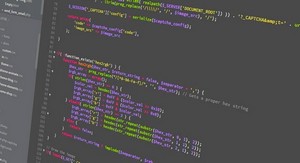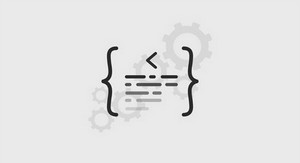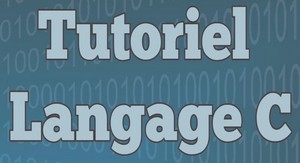Cours complet essential langage C, tutoriel & guide de travaux pratiques en pdf.
Introduction
Where C came from, what is it like, what other resources might you look at
Section 1 Basic Types and Operators
Integer types, floating point types, assignment operator, comparison operators arithmetic operators, truncation, promotion
Section 2 Control Structures
If statement, conditional operator, switch, while, for, do-while, break, continue
Section 3 Complex Data Types
Structs, arrays, pointers, ampersand operator (&), NULL, C strings, typedef
Section 4 Functions
Functions, void, value and reference parameters, const
Section 5 Odds and Ends
Main(), the .h/.c file convention, pre-processor, assert
Section 6 Advanced Arrays and Pointers
How arrays and pointers interact. The [ ] and + operators with pointers, base address/offset arithmetic, heap memory management, heap arrays
Section 7 Operators and Standard Library Reference
A summary reference of the most common operators and library functions
Basic Types and Operators
C provides a standard, minimal set of basic data types. Sometimes these are called « primitive » types. More complex data structures can be built up from these basic types.
Integer Types
The « integral » types in C form a family of integer types. They all behave like integers and can be mixed together and used in similar ways. The differences are due to the different number of bits (« widths ») used to implement each type — the wider types can store a greater ranges of values.char ASCII character — at least 8 bits. Pronounced « car ». As a practical matter charis basically always a byte which is 8 bits which is enough to store a single ASCII character. 8 bits provides a signed range of -128..127 or an unsigned range is 0..255. charis also required to be the « smallest addressable unit » for the machine –each byte in memory has its own address.
short Small integer — at least 16 bits which provides a signed range of -32768..32767. Typical size is 16 bits. Not used so much.
int Default integer– at least 16 bits, with 32 bits being typical. Defined to be the « most comfortable » size for the computer. If you do not really care about the range for an integer variable, declare it intsince that is likely to be an appropriate size (16 or 32 bit) which works well for that machine.long Large integer — at least 32 bits. Typical size is 32 bits which gives a signed range of about -2 billion ..+2 billion. Some compilers support « long long » for 64 bit ints.
The integer types can be preceded by the qualifier unsignedwhich disallows representing negative numbers, but doubles the largest positive number representable. For example, a 16 bit implementation of shortcan store numbers in the range -32768..32767, while unsigned shortcan store 0..65535. You can think of pointers as being a form of unsigned longon a machine with 4 byte pointers. In my opinion,it’s best to avoid using unsignedunless you really need to. It tends to cause more misunderstandings and problems than it is worth.
Extra: Portability Problems
Instead of defining the exact sizes of the integer types, C defines lower bounds. This makes it easier to implement C compilers on a wide range of hardware. Unfortunately it occasionally leads to bugs where a program runs differently on a 16-bit-int machine than it runs on a 32-bit-int machine. In particular, if you are designing a function that will be implemented on several different machines, it is a good idea to use typedefs to set up types like Int32for 32 bit int and Int16for 16 bit int. That way you can prototype a function Foo(Int32)and be confident that the typedefs for each machine will be set so that the function really takes exactly a 32 bit int. That way the code will behave the same on all the different machines.
int Constants
Numbers in the source code such as 234default to type int. They may be followed by an ‘L’ (upper or lower case) to designate that the constant should be a longsuch as 42L. An integer constant can be written with a leading 0x to indicate that it is expressed in hexadecimal — 0x10is way of expressing the number 16. Similarly, a constant may be written in octal by preceding it with « 0 » — 012is a way of expressing the number 10.
Type Combination and Promotion
The integral types may be mixed together in arithmetic expressions since they are all basically just integers with variation in their width. For example, charand intcan be combined in arithmetic expressions such as (‘b’ + 5). How does the compiler deal with the different widths present in such an expression? In such a case, the compiler « promotes » the smaller type (char) to be the same size as the larger type (int) before combining the values. Promotions are determined at compile time based purely on the typesof the values in the expressions. Promotions do not lose information — they always convert from a type to compatible, larger type to avoid losing information.
Pitfall — int Overflow
I once had a piece of code which tried to compute the number of bytes in a buffer with the expression (k * 1024)where kwas an intrepresenting the number of kilobytes I wanted. Unfortunately this was on a machine where inthappened to be 16 bits. Since kand 1024 were both int, there was no promotion. For values of k >= 32, the product was too big to fit in the 16 bit intresulting in an overflow. The compiler can do whatever it wants in overflow situations — typically the high order bits just vanish. One way to fix the code was to rewrite it as (k * 1024L)– the longconstant forced the promotion of the int. This was not a fun bug to track down — the expression sure looked reasonable in the source code. Only stepping past the key line in the debugger showed the overflow problem. « Professional Programmer’s Language. » This example also demonstrates the way that C only promotes based on the typesin an expression. The compiler does not consider the values 32 or 1024 to realize that the operation will overflow (in general, the values don’t exist until run time anyway). The compiler just looks at the compile time types, intand intin this case, and thinks everything is fine.
………
Essential langage C (179 KO) (Cours PDF)


